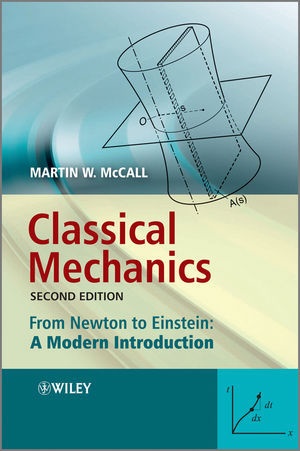Read more
Informationen zum Autor Dr. Martin McCallis based at Imperial College London (UK) in the Photonics Group of the Physics Department. He began his research career at GEC Hirst Research Centre working on Photorefractives for real-time image processing. After completing his PhD he moved back to academia as a postdoc at the University of Bath (UK) where he worked on nonlinear dynamics in optoelectronic systems. Dr. McCall returned to Imperial College as a faculty member in Physics where he focusses mainly on complexity within linear optics, looking at how light diffracts in periodic and quasi-periodic structures. His particular specialism is using coupled wave techniques for simplifying problems that are otherwise very complicated. Aside from electromagnetics, he has interests in classical mechanics, relativity, chess and ceroc dancing. In addition to his book on Classical Mechanics: a Modern Introduction (2000), Dr. McCall has published over 75 refereed journal papers and conference presentations. He is joint holder of five patents. Klappentext Classical Mechanics provides a clear introduction to the subject, combining a user-friendly style with an authoritative approach, whilst requiring minimal prerequisite mathematics - only elementary calculus and simple vectors are presumed. The text starts with a careful look at Newton's Laws, before applying them in one dimension to oscillations and collisions. More advanced applications - including gravitational orbits, rigid body dynamics and mechanics in rotating frames - are deferred until after the limitations of Newton's inertial frames have been highlighted through an exposition of Einstein's Special Relativity.* Comprehensive yet concise introduction to classical mechanics and relativity.* Emphasize real life examples.* Includes many interesting problems and a key revision notes chapter.* Presented in a style that assumes a minimum of mathematical knowledge.* Contains new chapter on computational dynamics.* Unique mixture of classical mechanics with relativity.* Supplementary web link and solutions manual. Zusammenfassung Classical Mechanics is a comprehensive yet concise introduction to classical mechanics and relativity. Assuming only a minimum of mathematical knowledge, the book combines a user-friendly style with an authoritative approach to its subject, beginning with Newton's laws and advancing onto an exposition of Einstein's Special Relativity. Inhaltsverzeichnis Preface to Second Edition xi Preface to First Edition xiii 1 Newton's Laws 1 1.1 What is Mechanics? 1 1.2 Mechanics as a Scientific Theory 1 1.3 Newtonian vs. Einsteinian Mechanics 2 1.4 Newton's Laws 3 1.5 A Deeper Look at Newton's Laws 5 1.6 Inertial Frames 7 1.7 Newton's Laws in Noninertial Frames 10 1.8 Switching Off Gravity 11 1.9 Finale - Laws, Postulates or Definitions? 12 1.10 Summary 12 1.11 Problems 13 2 One-dimensional Motion 15 2.1 Rationale for One-dimensional Analysis 15 2.2 The Concept of a Particle 16 2.3 Motion with a Constant Force 17 2.4 Work and Energy 17 2.5 Impulse and Power 19 2.6 Motion with a Position-dependent Force 19 2.7 The Nature of Energy 21 2.8 Potential Functions 22 2.9 Equilibria 25 2.10 Motion Close to a Stable Equilibrium 25 2.11 The Stability of the Universe 26 2.12 Trajectory of a Body Falling a Large Distance Under Gravity 30 2.13 Motion with a Velocity-dependent Force 32 2.14 Summary 34 2.15 Problems 35 3 Oscillatory Motion 39 3.1 Introduction 39 3.2 Prototype Harmonic Oscillator 39 3.3 Differential Equations 40 3.4 General Solution for Simple Harmonic Motion 41 3.5 Energy in Simple Harmonic Motion 43 3.6 Damped Oscillations 44 3.7 Light D...

